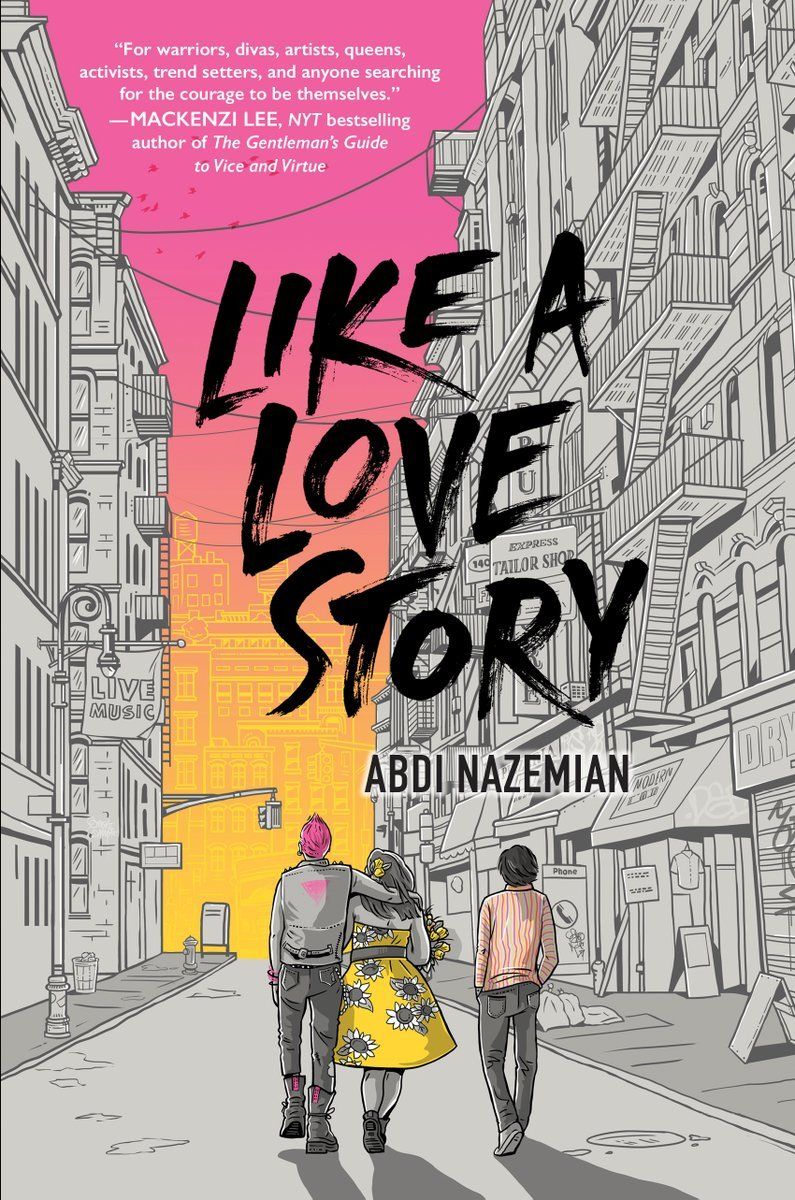Like a Love Story by Abdi Nazemian

This week has been over the top busy both personally and professionally and I have not spent time online and therefore nothing has stuck out to me to write about. This book that I finished a few weeks ago, however, has stuck with me so I figured I could use it for this assignment. Not only was it a beautifully written book, it provided so much information and perspective from voices that aren't usually portrayed in mainstream media.
What is the global/historical focus of this artifact? This book is a multi-perspective book focusing on the AIDS epidemic in the late 80's in New York City. The 3 teen characters, whose perspectives are rotated per chapter, are: Reza, a refugee from Iran via Toronto, who is coming to terms with being gay, fear of AIDS and living with a step family, a wealthy, white, openly gay boy named Art whose family is ignoring his sexuality, lifestyle choices and dreams, and Judy, a white, straight girl from the middle class whose magnanimous uncle is dying of AIDS.
What is the historical story being told by this media message? The historical story being told is how the Regan administration would not use the name AIDS until 6 years into the epidemic, how people, mostly gay men, were dying and still protesting for recognition and support. The book focuses on ACT UP, a progressive & inclusive organization of activists fighting and protesting for the government to take AIDS seriously.
Whose history is portrayed in this message? The book mostly focuses on Reza, who is written from the personal life experiences of the author, Abdi Nazemian. The history of the Iranian Revolution, as told through the lens of a refugee and his family, and those living with AIDS in New York City during the height of the AIDS epidemic who were feared, shamed and isolated.
How is the subject of race addressed in this artifact? Race is addressed throughout the book from not only the main character who receives racial slurs daily by being Iranain, but also other minority characters in the book. Race is mildly addressed about Art, the rich white kid and how he is perceived by others - but it seems that has more to do with his clothing, accessories and hair choices.
What counts as violence? This question is the most thought provoking for me because initially I would probably have answered that AIDS itself was the most violent occurrence in the book - it goes into detail of how the uncle is slowly dying from all the complications of AIDS. But upon deeper investigation, I think it is the US government that imparts the most violence by being silent. By charging thousands of dollars for life-saving medication. By being bigots and racists and capitalists while thousands of people were dying preventable deaths.